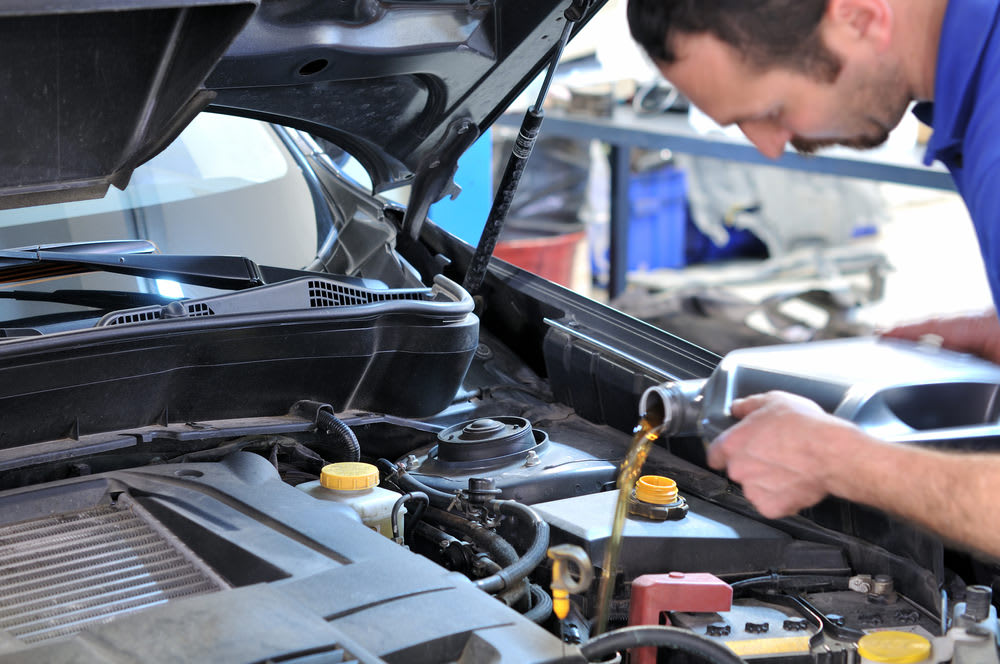

While the engines used in today’s cars may seem uniquely modern, if you look closely at their underlying principles, you would find they are still related to engines developed in the past. For example, Ford introduced its famed V8 engine in 1932. As any experienced mobile mechanic will tell you, since its introduction, the basic engine architecture has remained the same. Crucially, changing oil on a regular basis is still necessary, but the type and age of the engine makes a difference in when that happens.
Engines are tuned to meet requirements
It's true that there have been major changes to engines as new tuning and other engineering solutions have been applied to improve their performance, as well as enable them to meet Environmental Protection Agency standards. However, the basic architecture – gallery layout, piston angles, and the like – have stayed fairly consistent over the years.
One way engines have changed is that internal tolerances have tightened considerably. In the early days, upper cylinder heads tended to be very soft due to the metallurgy of the time. This dictated the use of low compression ratios within the engine. In turn, low compression ratios meant that performance was relatively flat as the long-legged engines could run for hours at 65 mph. It did take a bit of time to get there, though. It was not until the invention of tetraethyl lead for use as a gasoline additive that the auto industry was able to up compression so that engines performed better. Tetraethyl lead provided upper cylinder lubrication and meant engines could operate more robustly.
Engine tolerances loosen over time
While they have lots in common with their predecessors, today's engines are engineered to much closer tolerances. The tolerances are such that engines perform more efficiently at higher compression ratios. This means that gas mileage can go up while emissions can be reduced.
Inevitably however, engine wear develops and the tight tolerances begin to loosen. As they loosen, oil use tends to go up. It is somewhat inversely proportional. As engines wear, oil use goes up. As oil use goes up, oil change intervals tend to reduce. Where oil was once changed every six months or 7,500 miles, it must now be changed at three months and 3,000 miles. As time goes one, the intervals are likely to get even tighter.
Specific engine requirements impact oil changes
While gasoline engines tend to operate at one end of the scale, diesel engines tend to operate at the other. From the start, diesel engines have had tighter tolerances. Tighter tolerances have been driven by the need to operate at high-pressures and high temperature. The pressures and temperatures were dictated by the fact that diesel engines are self-contained. They use self-ignition, as the engines rely on pressure and temperatures created by compression to ignite the diesel fuel. Diesel fuel also burns more efficiently as well.
Since the diesel is self-contained, any emissions products or other contaminants that are generated go into the oil and, over time, cause the oil to wear out. Oil change intervals on diesels can run to 10,000 miles, however, as the oil wears or as internal parts wear, there may be a need for more frequent oil changes.
Cars may need more frequent oil changes over time
The need for more frequent oil changes is usually driven by engine wear. As engines wear, once tight component tolerances become greater. In turn, this requires more oil use and as more oil is used over time, more frequent oil changes are needed. Mobil High Mileage is specifically designed for older engines, and reduces leaks as it burns off power-robbing deposits.
The specific type of engine can determine the need for more frequent oil changes. For example, a diesel, operating under high pressure and temperature, is a closed system that creates its own unique conditions. Special emissions and other engine byproducts are generated that can contaminate oil and cause it to wear sooner. Also the temperature of the engine causes oil to wear. Due to these factors, more frequent oil changes can be needed.



